Bay of Fundy Marine Aquaculture Site Allocation Policy
1.0 INTRODUCTION
Top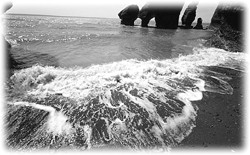
This document is the policy of the Province of New Brunswick with respect to the allocation of marine sites to support aquaculture operations in the Bay of Fundy. The policy addresses the allocation of sites for Atlantic salmon, alternate finfish, shellfish, lobster pounds and other activities including the culture of echinoderms and marine plants. An overview of industry and the current status of development for the various species is contained in Appendix 1.
This Policy applies to the Bay of Fundy only and will guide provincial decisions on the allocation of marine sites for aquaculture and specifies a management regime for the current aquaculture sector.
The policy, while focusing on the allocation of sites for aquaculture, has taken into account the unique environment and the need to foster the co-existence with other marine resource users in a sustainable manner.
As a result of the significant contribution to the social and economic fabric of the Bay of Fundy by aquaculture and commercial fisheries, the policy is recognized as a major tool to fostering a positive climate for the co-existence of these two sectors through improved consultation. Aquaculture production in the Bay of Fundy is predominately Atlantic salmon and represents in excess of 95 percent of the total aquaculture production in the Province. The commercial farming of Atlantic salmon in New Brunswick began in the late 1970’s. Today, annual production is estimated at 25,000 tonnes with a farm gate value of $190 million. The industry contributes over $30 million in wages and benefits to the economy on an annual basis. From an employment perspective it generates in excess of 2,000 direct and indirect jobs, mostly in Charlotte County, although job spin-offs occur throughout the Province.
The Bay of Fundy commercial fishery, including its processing and marine construction services sectors, creates employment for 3,500 people. While numerous species are harvested, with the 1998 landed value in excess of $37 million, the herring, lobster and scallop fisheries are the most significant fisheries in this region.
1.1 Principle
This Policy is founded on the basic principle of ensuring sustainable aquaculture development based on consideration of all applicable economic, environmental and social factors.
1.2 Policy Objectives
- To ensure the economic sustainability of aquaculture development.
- To ensure that aquaculture development is conducted in an environmentally-sustainable manner.
- To provide a policy framework that facilitates the restructuring of the Atlantic salmon marine aquaculture sector.
- To provide a policy framework that encourages diversification and development of alternate species.
- To ensure that site allocation decisions are timely and undertaken within a transparent and equitable process.
1.3 Authority and Protocols
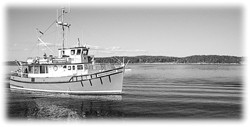
The New Brunswick Aquaculture Act, Chapter A-9.2 New Brunswick Regulation 91-158 under the Aquaculture Act (O.C. 91-806)
Canada-New Brunswick Memorandum of Understanding on Aquaculture Development (1989)
New Brunswick Department of Natural Resources and Energy and New Brunswick Department of Fisheries and Aquaculture Protocol on Aquaculture Site Allocations (1988)
The New Brunswick Crown Lands and Forest Act, Chapter C-38.1
New Brunswick Department of Agriculture, Fisheries and Aquaculture and New Brunswick Department of the Environment and Local Government Protocol on Enforcement and Compliance (under development)
The New Brunswick Clean Environment Act, Chapter C-6
The New Brunswick Water Quality Regulation 82 – 126 under the Clean Environment Act, Chapter C-6
The Clean Water Act, Chapter C-6.1
2.0 SITE ALLOCATION
Top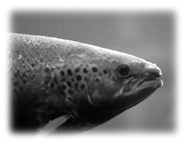
2.1 Atlantic Salmon Industry Restructuring Priorities
The Atlantic salmon marine cage industry is facing: 1. the need to improve production efficiencies to remain competitive in the global marketplace;
2. the need to standardize fish health management practices; and
3. the need to ensure the environmental sustainability of the sector.
Government and industry have identified the following management tools as priorities to address fish health management and improve environmental stewardship:
1. single year class management system (restructuring); and
2. bay management area framework
Over the last several years many operators have adopted single-year class sites as their preferred method of production. The Province supports the industry’s marine site restructuring objectives by adopting site allocation and management policies that facilitate the transition of the industry towards this preferred management regime.
The administrative tools that the Province will use to support the industry include new site allocations, sub-leasing of sites, site expansions, and transfer of sites. Priority will be given to existing licence holders in the allocation of any new sites until industry restructuring is complete.
2.1.1 Aquaculture Bay Management Areas
In order to achieve single-year class farming the Bay of Fundy has been divided into distinct zones referred to as Aquaculture Bay Management Areas (ABMA). The boundaries of each ABMA will be based on a combination of oceanographic, fish health and business considerations. With respect to the oceanographic information, the ABMA structure will be based on existing available information. A combination of oceanographic studies relative to currents, water exchange and ownership of sites may result in further refinement of these boundaries. The ABMA framework will apply to all areas within the Bay of Fundy supporting marine finfish aquaculture activities.
2.1.2 Bay Management Agreements
Both government and industry are committed to improving the level of co-operation and communication between aquaculture licensees with respect to local management practices. Both parties wish to encourage the establishment of a management framework that provides flexibility relative to specific conditions in each Bay while ensuring that all licensees agree and comply with established operating standards and practices. The aquaculture industry will develop agreements referred to as Bay Management Agreements in order to establish operating standards for the respective Aquaculture Bay Management Area. These agreements will reflect government and industry standards, plus any applicable local management practices.
While Bay Management Agreements are not mandatory they will be strongly urged between those finfish operations located within the same ABMA as the Province intends to legislate the Bay Management Plans (year class to be cultured) derived from these agreements. The Province will require all agreements for each ABMA be submitted for approval prior to the Department approving any new sites, boundary adjustments, subdivision of sites, sub-leasing of sites or production increases.
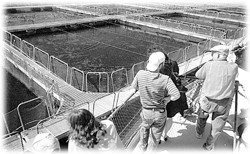
Bay Management Agreements will adhere to the following standards:
- Be written, contractual agreements in effect for each production cycle and be open to amendment prior to a new year class being placed within the subject area.
- Contain management standards and practices including, but not restricted to, husbandry, harvesting, transportation, year class stocking, fish health, waste management, environmental management, a code of practice to minimize escapees and may include other bay management practices determined by parties to the ABMA; provided always that the management standards and practices agreed to by the parties to a Bay Management Agreement shall not be at variance with such standards and practices which are the subject of a statute or a regulation or a permit made under the authority of a statute.
- Specify the communication and dispute settlement framework the licensees intend to use among themselves.
- Specify the enforcement mechanism, sanctions and procedures the licensees intend to implement to ensure compliance with the agreed upon management standards and practices.
2.1.3 Single-Year Class Entry Sites
To improve the fish health management capabilities of the salmon aquaculture sector, all salmon aquaculture site operations will be required to adopt single-year class entry operating practices as defined. The definition of a single-year class entry site operation will be: A single year class operation has only one generation of fish on a site at a time. Provisional holdover of market stocks located at a distinct, separate location within the site, apart from the newly stocked fish will be permitted. Market fish holdovers will not exceed 20% of the Allowable Production Level on the site and will not be held beyond September. Holdovers will be subject to the Bay Management Agreement and annual review by the Fish Health Technical Committee. The review will cover fish health status and the number of fish within the Aquaculture Bay Management Area. Any deviations from this, such as extended holdovers on broodstock sites, will be subject to approval by the Minister and will involve consultation with the applicable Aquaculture Bay Management Area.
Licensees must meet the requirements of single year class production by spring entry 2001 as defined above. Specifically, an operator must be culturing on a single year class basis by spring 2001 or be moving towards it (i.e. have initiated efforts to move towards single year class status by spring 2001). The Province will initially process only new site applications that facilitate existing industry evolving to single-year class marine production operations.
Sites fallowed prior to the given deadline will be required to maintain single-year class operations as defined
2.2 Site Allocation for Atlantic Salmon 2.2.1 New Sites
The Province intends to be strategic in terms of meeting the needs of industry to be economically and environmentally sustainable. Priority will be given to existing licence holders in the allocation of any new sites until industry restructuring is complete, within the context of the eligibility criteria outlined in Appendix 2 of this Policy.
Over time, the existing aquaculture licensees have increased production to address changing economic conditions. In certain bays, the overall production level and existing site structure limits the flexibility of the licensees with respect to attaining economically viable scales of production without potentially compromising the overall environmental sustainability of a bay. Applications for new sites that relinquish an existing site within a bay identified for a reduction in total farms in exchange for a site located in another area will be given priority until such time as reduction objectives have been accomplished.
2.2.2. Sub-Leasing of Sites
The Province will allow the sub-leasing of a marine aquaculture site into a maximum of two parcels to support two aquaculture companies to operate on the same site to establish the same year class entry for a single-year class entry operation as defined in Section 2.1.3. A formal written sub-lease or subdivision arrangement will be required and each party must have an aquaculture license and lease.
All sub-lease and subdivision arrangements will be subject to the parties practising the same single-year class entry operations on the entire site. The parties must have a written agreement with respect to practising single-year class operations on the site and both licensees/lessees agree in writing to the relevant ABMA.
All sub-lease agreements will be drafted by lawyers representing the involved aquaculture companies. The content and format of the agreements must be in accordance with Provincial requirements. All such agreements will be required to receive the prior written approval of the Province before stocking is allowed.
2.2.3 Boundary Amendments
To facilitate single year class restructuring, applications for boundary amendments to existing sites will be assessed on a case by case basis and will take into consideration the relative location of the subject site to neighbouring aquaculture operations as well as the potential impact on other users of the resource.
2.2.4 Transfer of Sites
The Province will consider requests to transfer marine aquaculture sites with a valid lease between existing aquaculture lessees to facilitate the implementation of single-year class entry sites. The involved parties will be required to accept the terms and conditions of the existing license and lease. The subject licensees will also be required to accept in writing the ABMA for the area. The Province will allow the transfer of an aquaculture lease to facilitate the purchase of an aquaculture operation. The new party will be subject to the terms and conditions of the existing aquaculture lease and license and must meet the terms of this Policy.
2.2.5 Exclusion Areas
A number of key areas are strategic to support the traditional fishing sector. The Province is committed to promoting the co-existence of the commercial fishery and aquaculture sectors and intends to exclude these areas for eligibility for new Atlantic salmon aquaculture sites at this time. These areas are specified in the Site Application Guide. Boundary expansions and production increases will be considered within these areas.
Over time these areas may be refined based on consultation with the aquaculture and commercial fisheries sector. A committee will be established consisting of representatives from the commercial fisheries, processing and aquaculture sectors, and the two levels of government to review and provide recommendations to the Minister of Agriculture, Fisheries and Aquaculture on modifications and refinement to exclusion areas.
2.2.6 Herring Weir Conversions
The Province will only consider sites associated with herring weirs for marine aquaculture in the context of the overall objectives of this Policy and the need to ensure a viable herring weir industry, in consultation with the local weir association and local processors.
Applications to convert herring weir sites to salmon aquaculture will only be entertained as part of the process to restructure the existing salmon aquaculture sector. A proposal to convert a herring weir to a salmon aquaculture site must involve one or more existing aquaculture licensees.
The Province will only approve a herring weir conversion where:
1. The viability of the herring weir sector is not compromised as reflected in consultations with the local weir association and processing component of the industry. In order to ensure the viability of the weir industry, weirs may be required to relocate to a different location prior to consideration being given for salmon site conversion.
2. The conversion does not result in a sub-lease arrangement whereby the former herring weir licensee merely rents the site to an existing aquaculture licensee. Specifically, the Province will only accept a proposal to convert a herring weir to a salmon aquaculture site where the former herring weir licensee either:
a) demonstrates a managerial and financial commitment to the aquaculture operation or;
b) demonstrates a significant financial investment in the proposed salmon aquaculture operation or;
c) is not involved with the salmon aquaculture operation in any manner.
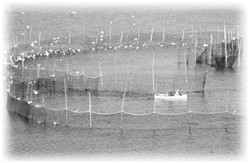
3. Final authority to occupy and operate on the site will be withheld pending the Province being notified by Fisheries and Oceans Canada that the herring weir license privilege has been relinquished, banked or transferred to another location or fisher. Transfer can only be made to another fisher for the purpose of operating a herring weir and not considered for other subsequent uses.
A successful applicant will be given a maximum of twelve months from the date of aquaculture license issuance to develop the site in keeping with the subject proposal.
Should the applicant fail to develop the site as approved, the subject approvals will be forfeited.
2.2.7. Broodstock Sites
The Province will consider the allocation of marine sites to support broodstock development in the context of an industry-wide broodstock program. Broodstock sites must meet all the requirements of a commercial marine aquaculture site except necessity for a fallowing period and will be subject to the public consultation process as outlined in Section 2.6. Holdover of stock for an extended period of time will require the permission of the Minister of Agriculture, Fisheries and Aquaculture.
Aquaculture licensees wishing to hold broodstock at a marine site will be required to have their intent identified and approved by the Province as part of conditions of their license. Consultation will be undertaken with the applicable Aquaculture Bay Management Area stakeholders on holdover at broodstock sites.
2.2.8. Undeveloped Sites
The Province may re-allocate any marine aquaculture site where development has not occurred within twelve months of the original site approval or the aquaculture license and aquaculture lease are cancelled for non-compliance with the subject terms and conditions. This section excludes sites left vacant to meet fallowing or other fish health and/or environmental management requirements.
The Province may decide not to allocate an undeveloped site where it is determined that reducing the overall number of sites or level of production is in the best interests of the industry or the environment.
2.2.9 Parr Acclimation Sites
The Province will not allocate any additional marine parr acclimation sites. The licensee of a parr acclimation site may apply to have the license amended to allow for the grow-out of other species.
2.3 Site Allocation for Alternate Species Aquaculture
The Province will support the allocation of a limited number of new marine sites to test the commercial feasibility of a number of alternate species other than Atlantic salmon. These alternate species will be considered for development on a case by case basis.
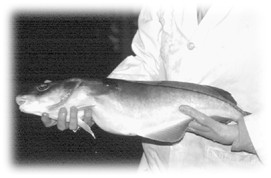
Notwithstanding the above, the Province intends to give priority to the needs of the existing salmon aquaculture sector to restructure with the allocation of new sites. However, the fact that some alternate species may require site conditions different to those of salmon farms will be taken into consideration.
The allocation of any new marine site to test the commercial feasibility of alternate aquaculture species will be undertaken in the context of the Province’s Alternate Species Development Program.
Applicants will be required to submit a comprehensive, scientifically-based research and development proposal prior to the review of the marine site application.
The Province may allow the conversion of a research and development site to a commercial site subject to the success of the research and the results of environmental monitoring associated with the activity. Any boundary or production increase required in order to facilitate the conversion of the site from research and development to a commercial operation will be subject to the consultation process as outlined in Section 2.6. The proponents involved in unsuccessful alternate finfish and shellfish research and development sites will not be permitted to convert to a commercial Atlantic salmon aquaculture operation.
The Province is committed to evaluating the potential for shellfish aquaculture in the Bay of Fundy region subject to assessing both the economic viability of such operations and the ability to meet the requirements of the Canadian Food Inspection Agency relative to resource and product testing. The Province will determine whether a comprehensive shellfish development program in this region is feasible.
Until such time as this review is completed, the Province will only entertain applications for shellfish or marine plant aquaculture in the context of research and development initiatives for certain species as defined from time to time by the Department as being a species with development potential, and recognizing the concerns of other user groups in the vicinity.
2.4 Site Allocation for Lobster Pounds
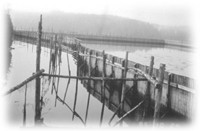
The Province will continue to review applications for lobster pounds on a site by site basis. The information requirements will be consistent with those outlined in Section 2.5 and the consultation process will be as outlined in Section 2.6.
Applicants will be required to have the proprietary rights associated with the uplands located immediately adjacent to the lobster pound site.
2.5 Information Requirements Evaluation Criteria and Compliance History for Site Proposals
Proposals for aquaculture sites will only be accepted from aquaculture licensees having no unresolved licensing, leasing, reporting or compliance issues with the Minister of Agriculture, Fisheries and Aquaculture, and the Minister of the Environment and Local Government.
The Province requires that site applications contain specific information to assist in the timely review of the proposal. In general, these information requirements will apply to all new site proposals or any major amendment to an existing aquaculture license relative to the site boundary or allowable production limit. Specific details of requirements for site proposals are outlined in the Marine Aquaculture Site Allocation Application Guide for the Bay of Fundy.
2.6 Consultation Process
The Province will consult with the public and government agencies as follows:
Aquaculture Industry Consultations: The Province will consult with existing aquaculture licensees with respect to new site proposals or amendments to licences for existing sites. These consultations will focus on the license and or leaseholders located within the same Aquaculture Bay Management Areas. The Province will consult directly with the appropriate representatives of the marine aquaculture sector prior to proceeding with applications not covered by an Aquaculture Bay Management Area. The New Brunswick Salmon Growers’ Association will be requested to assist in the consultation process with license holders.
Commercial Fishery Consultations: The Province will consult with the traditional commercial fishery as part of the process for new applications, boundary amendments, or production increases. The Province will provide an opportunity to fishermen who undertake commercial harvest activities in proximity to a proposed new site or where amendments to existing sites are being requested. Organizations representing the commercial fishery and the Department of Fisheries and Oceans will be asked to assist in identifying these fishermen and will also be asked for their own positions via a referral process.
Inter-Agency Consultation: The Province will continue to request other government agencies to assist in the evaluation of candidate sites via an inter-agency review network.
The Aquaculture Site Evaluation Committee (ASEC), comprised of federal and provincial agencies with regulatory authority relative to the marine environment, will continue to function as the key inter-agency advisory body in assessing site-related applications.
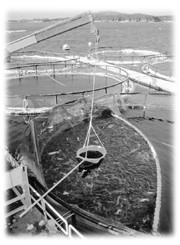
Additional financial expertise will be added to the committee given the new requirement for business plans in the site allocation process.
The specific recommendations of each agency will be recorded at the ASEC.
Landowner Notification: Written notification of adjacent landowners, as required under the Aquaculture Act, will continue to be required with follow-up consultations undertaken in response to comments received. This process will continue to include newspaper advertising indicating the location of the proposed site.
3.0 ENVIRONMENTAL MANAGEMENT
TopThe Bay of Fundy is a unique eco-system that continues to support diverse and important marine-based economic activity. The Province is committed to protecting the habitat of this significant marine environment.
Considerable effort has been undertaken to ensure that aquaculture activities are environmentally sustainable. The substantial growth of the aquaculture industry warrants an enhanced level of environmental stewardship of all resources that make this industry viable.
The overall approach to environmental management involves many elements and must be comprehensive in design, complete with goals, standards, assessment, monitoring, research and compliance. The Province intends to work in cooperation with industry and the federal government in implementing the following measures and policy initiatives:
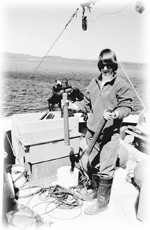
- The Province will continue to involve the federal government in the assessment of new marine aquaculture sites and proposed boundary or production level amendments to existing operations.
- The Province will continue to support the need for studies that will improve the understanding of interactions between aquaculture activities and the marine environment.
- Each approved marine aquaculture operation will continue to be monitored in accordance with the Provincial Environmental Monitoring Program (EMP). The EMP monitors and rates sites in relation to their marine sediment impacts in the vicinity of the aquaculture operation.
- Where environmental standards for marine sediment impacts are not met, the Province will require the licensee to establish and implement an Environmental Remediation Plan for the site.
- Approved Production Levels for each site will be based on assessment of the specific geographical and environmental characteristics of the site.
- The Province will encourage research to improve the scientific basis of sustainable aquaculture management.
- The Province will require Waste Management Plans to be incorporated into each Aquaculture licence.
4.0 COMPLIANCE AND ENFORCEMENT
Top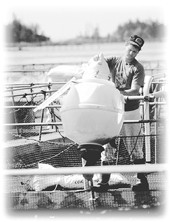
The economic and environmental sustainability of the aquaculture sector is fundamental to the success of the industry. As evidenced by this Policy, both industry and government recognize the need for standards and practices to limit risks to fish health and to help ensure economic sustainability and environmental protection. Compliance with these standards and practices will be a requirement under legislation or contained as conditions of aquaculture licence or approval to operate.
Government will ensure a high level of compliance with these standards and practices by ensuring the following:
- The Province will monitor, inspect and audit self-monitoring programs to ensure that government standards are being met at all times.
- The Province maintains the right to suspend aquaculture licenses and leases to ensure compliance with established standards.
- The Province will utilize its full range of actions available under the Clean Environment Act and Clean Water Act to ensure that compliance is maintained.
- The monitoring and enforcement of approved production levels at each site will be addressed through government auditing of all fish movements between hatcheries and marine sites.
- • All approved sites will be required to meet applicable federal and provincial legislative and regulatory requirements.
5.0 PUBLIC DISCLOSURE AND TRANSPARENCY
TopThe Policy fosters the Province’s commitment to an increased level of consultation with the public, the commercial fishery and other affected stakeholders.
Advertisement of all proposed sites and boundary amendments will continue to be undertaken in order to afford the general public and other user groups the opportunity to make comment. Consultation will be undertaken with members of the commercial fishery, aquaculture sector, and processing sector. In addition, the historical high level of collaboration with Fisheries and Oceans Canada will continue.
The Policy, Application Guide and form will be made available on the Departmental web page in order to promote increased availability to the public. In addition to this, information with respect to advertised sites will be made available on the web page.
Ministerial decisions on new site allocations are available to the public on request.
The summary of combined results of the marine aquaculture site environmental monitoring program and monitoring standards will be available to the public upon request and on the web site for the Department of Agriculture, Fisheries and Aquaculture.
All company information relating to financing, fish health reports and records, and production levels will remain confidential consistent with the New Brunswick Aquaculture Act and the New Brunswick Right to Information Act.
6.0 Fees
TopFees are prescribed by regulation 91-58 under the New Brunswick Aquaculture Act. It is the policy of the Province to review fees from time in the context of cost recovery from the industry.
7.0 AMENDMENTS TO POLICY
Top
This Policy may be amended from time to time.
In 2005, the Province, in conjunction iwtht he federal government and industry, will reassess the progress of the salmon aquaculture sector with respect to marine site management structure and propose any necessary amendments to the Policy.
APPENDIX 1 AQUACULTURE SECTOR OVERVIEW
TopGlobal demand for seafood products has grown steadily and is estimated to be in the vicinity of 120 million tonnes a year. The traditional fisheries have peaked at around 84 million tonnes and has been experiencing a decline over the past few years. At the same time, world wide aquaculture production has developed: over the last decade a 10% growth has been experienced on an annual basis.
Atlantic Salmon Aquaculture
The culture of the Atlantic salmon began as a research and development initiative in the late 1970’s. The successful over-wintering of this species at a site on Deer Island demonstrated its feasibility and over the next several years a number of commercial Atlantic salmon farming operations emerged. Significant growth in this sector was experienced in the 1980’s and early 1990’s. While the industry has experienced recent fish health problems and an increasingly competitive international market, both government and industry remain confident that the sector will continue to thrive.
This Policy is intended to act as an important tool in addressing the needs of the Atlantic salmon aquaculture industry in meeting the economic and environmental challenges and to secure a positive climate for the future.
Alternate Finfish Aquacualture
The culture of alternate finfish species has been identified as a significant wealth and employment creation opportunity for the future. Comprehensive research and development activities are underway aimed at identifying the methods of culture necessary to commercialize specific candidate species. The Province anticipates that, over time, the existing Atlantic salmon aquaculture sector will diversify its crop base by culturing alternate species as well as Atlantic salmon. However, some of the candidate species require different site conditions than Atlantic salmon. In such cases, the Province intends to accept applications for marine sites from the private sector to support the culture of alternate finfish species where appropriate. As knowledge of alternate species increases, it may be necessary to review this policy in that context.
The Province may allow the pre-commercial testing of alternate species on approved salmon aquaculture sites subject to the applicant receiving an aquaculture license amendment to include the species to be tested and subject to the research being conducted within the allowable production limit assigned to the site.

Shellfish Aquaculture
While exhibiting promise, the commercial culture of shellfish species in the Bay of Fundy has been limited due to public health and safety, technical and economic constraints. The Province intends to explore the commercial potential of culturing various shellfish species. Development initiatives will only be pursued where product safety is generated through product testing that is both feasible and economically viable. In this regard, the Province will entertain applications for marine sites for the purpose of conducting research and development trials to test the commercialization potential of specific shellfish species.
Lobster Pounds
Lobster pounds are located in the inter-tidal areas of the marine environment and provide holding capacity for owners with respect to meeting market requirements. Given their requirement to be adjacent to upland areas, the allocation of marine sites to support lobster pounds warrants specific requirements with respect to riparian rights. Representatives of the lobster pound sector have recently organized to allow lobster pound owners to better identify their needs to government. The Province is committed to collaborating with these representatives to further identify their strategic needs to support continued growth.
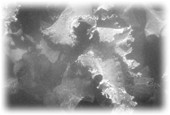
Marine Plants and Other Species
The Province intends to explore the commercial potential of culturing various marine plants. Subject to prior review of each proposal by the Department, applications for marine sites for research and development trials will be accepted to determine the commercialization potential of specific species.
APPENDIX 2 ELIGIBILITY FOR NEW MARINE SALMON SITES
TopApplications for new marine sites to support Atlantic salmon aquaculture will only be accepted from licence/lease holders demonstrating the financial and managerial capability to develop and operate an economically viable aquaculture operation to the satisfaction of the Minister. Applicants will be required to demonstrate a managerial and financial commitment to the aquaculture operation. The Province will eliminate the allocation of a marine site whereby the applicant merely rents the site to an existing aquaculture licensee.
The following will be the priority for processing Marine Aquaculture Site Applications (Atlantic salmon only) in accordance with the Marine Site Allocation Policy for the Bay of Fundy. New site applications will only be entertained by eligible fish farmers who are already in the industry. Only one application from each eligible proponent will be accepted. Priority to processing applications will be given to operators who require production increases or alternate sites to sustain or achieve single year class operations by the spring of 2001. Applications should clearly illustrate why priority is required for either 2001 or 2002 entry.
An eligible proponent for the purpose of submitting an application must be a licence/leaseholder (referred to hereafter as an operator) having invested in at least 50% of the total capital equipment and daily operations on the site prior to July 31, 2000. An independently prepared statement by a professional recognized in the field of accounting which confirms that the licence/leaseholder has invested as outlined must accompany the application.
Priority for applications will be given to:
- Operators demonstrating leasehold rights to only one marine site in any one Aquaculture Bay Management Area.
- Two or more operators who apply collectively for a marine site to facilitate alternate single year class operations.
- An operator who prefers to culture salmon at one site only and requires a production increase and/or boundary amendment to accomplish economic viability as a single year class operator. The proponent will be required to demonstrate how this increase would make the site economically viable.
- An operator having two or more aquaculture sites in bay management areas that culture the same year class fish and requires another site to balance annual production.
- Operators in Aquaculture Bay Management Areas that have not accomplished single year class farming.
Second priority will be given to an operator who is located in an area of potential conflict as related to navigation, marine user facilities, change in Departmental policy with respect to marine grow-out or concentrated production areas. The proponent will be required to relinquish interest in their existing site upon approval of the new application.
Applications will be processed subject to criteria outlined in the Bay of Fundy Marine Aquaculture Site Allocation Application Guide.
If you require assistanceor more detailed information, please contact the Department of Agriculture,Fisheries and Aquaculture (DAFA) Regional Office in St. George, or Head Office:
St. George Regional Office
Dept. of Agriculture, Fisheries & Aquaculture
P.O. Box 1037
107 Mount Pleasant Road
St. George, N.B., E5C 3S9
Tel: (506) 755-4000
Fax: (506)755-4001
Fredericton Head Office
Dept. of Agriculture, Fisheries & Aquaculture
P.O. Box 6000
Fredericton, N.B., E3B 5H1
Tel: (506) 453-2253
Fax: (506) 453-5210
